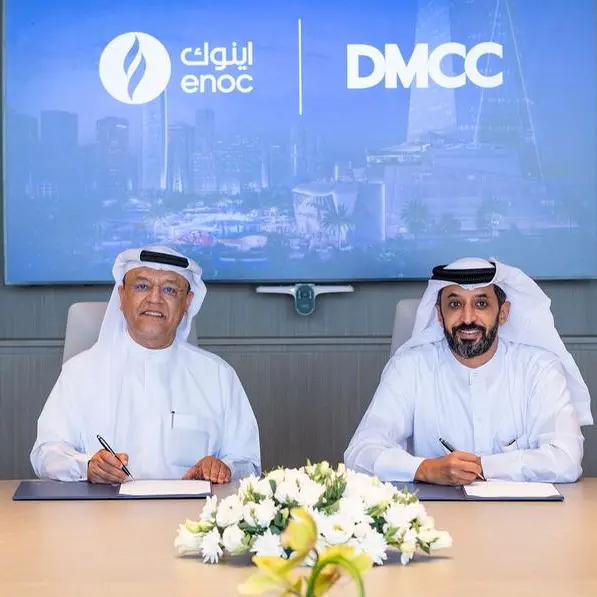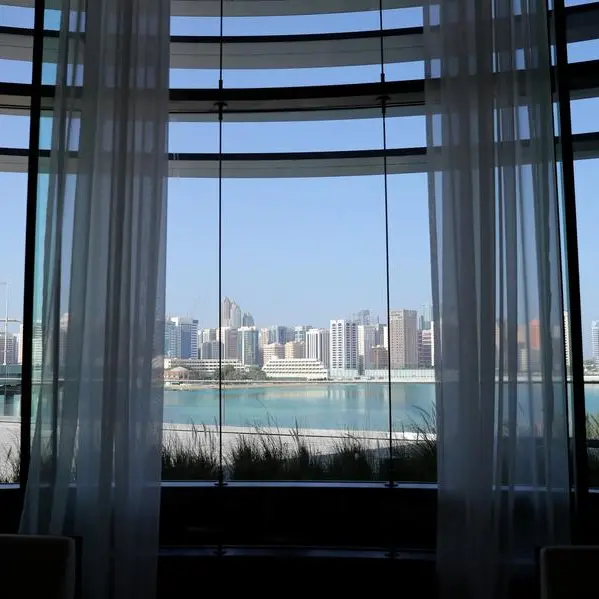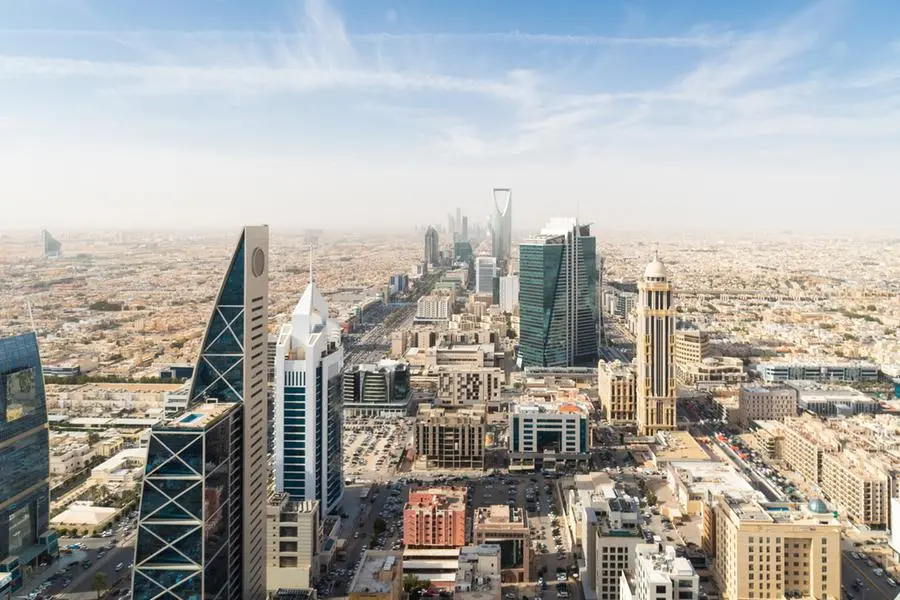PHOTO
12 February 2017
By Yasmine Saleh
As hundreds of thousands of people gathered in Downtown Dubai to celebrate New Year’s Eve 2015, a huge fire broke out at the 5-star The Address hotel, just hours before the emirate was due to begin its annual fireworks showcase. The fire was quickly put out and the building was evacuated, but insurance companies were left to bear the brunt of the losses.
The Address hotel will retrieve $332.2 million from its insurance claim, according to a statement issued by the hotel’s developer Emaar this month. The blaze, along with a string of other fires that hit several buildings in the United Arab Emirates (UAE) over the last few years, came at a time when the region was seeing a slowdown in economic growth and investments following the drop in oil prices, leaving the Gulf insurance industry facing a tough business environment.
The UAE and Saudi Arabia together control around 70 percent of the insurance market in the six-nation Gulf Cooperation Council, according to Krishna Dhanak, the executive director of consultancy firm Alpen Capital. Qatar follows in third place but with a small market share of no more than 10 percent.
The UAE is the biggest insurance market with Gross Written Premiums (GWPs) of 40 billion dirhams ($10.89 billion) in 2016, according to the UAE’s Insurance Authority (IA) website. GWPs – stood at 37 billion dirhams in the UAE in 2015 and 33.4 billion dirhams in 2014.
The country has 61 insurance companies, 143 brokerage entities and 19 agencies/agents. Although the 29 listed companies in the UAE reported a net profit of 310 million dirhams ($84.40 million) in the first half of 2016, Dhanak said this was distorted by a large one-time profit of 406 million dirhams scored by Abu Dhabi National Insurance Company.
When this one-time big gain is excluded, Dhanak pointed out that the overall net profit would show a loss of 96 million dirhams for the UAE’s listed firms during the first six months of 2016.
The IA’s director general, Ebrahim Alzaabi, told Zawya in an email interview this January the sector has suffered “deterioration” in the fire insurance loss ratio - the industry term for the total losses paid by an insurance company in the form of claims – over the last few years due to the number of fires that have occurred in the UAE. Read more here.
Saudi austerity bites
Dhanak expected the overall economic slowdown in the region, which has led to a decrease in government and corporate spending as well as curbed investment, to continue to impact the insurance industry this year. “2017 could mirror 2016 more or less,” he said.
The insurance sector, like other industries in the region, was hit by the steep decline in the price of oil since mid- 2014, according to analysts. The oil crisis has negatively impacted the economies of Gulf Arab states that rely heavily on oil revenues. Saudi Arabia, the world’s largest oil exporter, suffered a record budget deficit of 367 billion riyals ($97.86 billion) in 2015.
The kingdom has managed to trim the budget deficit through austerity measures.
Cost-cutting at several public and private companies in Saudi Arabia resulted in mass lay-offs last year, leading to a decrease in business for operators in the medical insurance sector, which constitutes around 51 percent of the kingdom’s total insurance GWPs, according to Turki Fadaak, head of research and advisory at the Saudi-based Albilad Capital investment firm.
“The insurance sector (in Saudi Arabia) was badly impacted by the general economic slowdown of the past two years of course,” he told Zawya in a phone interview.
Saudi Arabia is the Gulf’s second biggest insurance market, with 35 operators competing for business in the kingdom, but just four companies – Bupa Arabia, State-run Tawuniya, Medgulf and Malath – control around 59 percent of the market, according to Fadaak.
Swiss-based Zurich Insurance Company said that while it would continue to focus on the UAE as its primary market in the region, it has no immediate plans to enter the Saudi market since it is eyeing countries that are less dependent on oil.
“We see an effect due to the oil price that is very true. It affects our business pipeline,” Peter Englund, chief executive officer for global corporate in the Middle East at Zurich Insurance told Zawya. “But our model is a very flexible one, so we look for alternative markets or not as oil dependents.” Read more here.
Zurich has offices in the UAE, Bahrain and Qatar and distribution partners in other countries, including Saudi Arabia.
Projects sector may provide boost
The insurance markets’s long term growth prospects remain positive. A spike in the number of construction and infrastructure projects, expected ahead of major events such as the World Expo 2020 in Dubai, the World Cup 2022 in Qatar and the major infrastructure advancements as part of Saudi Arabia’s Vision 2030, are set to stimulate the industry in the long-term.
“The projects will definitely result in improving the insurance industries,” Dhanak said. “If it will happen in a period of five or six years is a matter of timing but surely and certainly there are prospects for growth going forward,” he added.
But Saudi analyst Fadaak warned that the impact of new infrastructure and construction projects will be minimal, especially in Saudi Arabia, as they were not linked to the two biggest segments in the insurance market.
“These projects will not reflect on the Saudi insurance market soon and will not have a significant impact as they will not impact the health or the motor insurance (sectors) that together constitute around 84 percent of the total Saudi insurance market.”
The motor and health sectors account for 70 percent of the insurance market in the GCC. Alzaabi of the UAE’s Insurance Authority said that higher penetration of medical insurance and growth of motor insurance due to new motor pricing are likely to aid the segment’s growth.
Sameer Yogishwar, CEO of HDFC International Life and Re Company Limited, an Indian insurance company that entered the UAE market last year, was more optimistic when looking at expected demand from a growing population.
“The region’s insurance industry in all likelihood will structurally mature in the medium to long term,” he said.
“Additionally, favourable demographics, with a growing expat population, increase in life expectancy, demand for innovative life and retirement solutions and the introduction of mandatory health insurance programs by certain countries in the region will provide positive momentum for insurance products in the short and medium term.”
“Do I really need insurance?”
Regardless of the economic conditions, a lack of awareness among many GCC residents of the benefits of insurance is a challenge for the sector.
“Sometimes people are not sure if that is the right thing to do. Do I really need insurance, some ask themselves,” said Sameena Ahmad, managing director of Alpen Capital. “That gives you the big scope of growth… once that got sorted out, growth will come.”
The need for more regulations and a shortage of qualified employees, are also some of the big challenges facing the industry, Ahmad said but steps are being made this year in this regard.
Saudi Arabia and the UAE have enacted several regulatory reforms in the insurance sector in the past couple of years and analysts expect the changes to yield positive results in the long term.
“With the regulatory changes, especially that Saudi Arabia has done, and if all countries follow suit, where premiums will be based on the actual risks you are associating with, premiums could go up and margin for losses could decline and we could see a lot of profitable businesses getting written,” Dhanak said.
The kingdom last year made it mandatory for private sector employers to provide medical insurance to their employees and their families. It also increased premiums in the motor insurance sector, which is also mandatory in the kingdom, by around 400 percent in 2016, according to a report by pan-Arab Al Arabiya English news website.
The UAE last month announced the final deadline for all residents to have mandatory health insurance, a deadline which had already been extended numerous times. It also increased the fees for mandatory car insurance by around 100 percent from the start of 2017, according to a report by the Emarat Alyoum daily newspaper on January 18.
Alzaabi said that the IA has a list of new regulations in the pipeline to help boost the sector’s performance in 2017 and beyond, adding that the high number of players in the market poses a challenge to the sector.
“The number of insurance companies and brokers could be considered as disproportionate with the volume of the market. The IA is encouraging insurance companies and brokers to realise mergers,” Alzaabi said.
© Zawya 2017
By Yasmine Saleh
As hundreds of thousands of people gathered in Downtown Dubai to celebrate New Year’s Eve 2015, a huge fire broke out at the 5-star The Address hotel, just hours before the emirate was due to begin its annual fireworks showcase. The fire was quickly put out and the building was evacuated, but insurance companies were left to bear the brunt of the losses.
The Address hotel will retrieve $332.2 million from its insurance claim, according to a statement issued by the hotel’s developer Emaar this month. The blaze, along with a string of other fires that hit several buildings in the United Arab Emirates (UAE) over the last few years, came at a time when the region was seeing a slowdown in economic growth and investments following the drop in oil prices, leaving the Gulf insurance industry facing a tough business environment.
The UAE and Saudi Arabia together control around 70 percent of the insurance market in the six-nation Gulf Cooperation Council, according to Krishna Dhanak, the executive director of consultancy firm Alpen Capital. Qatar follows in third place but with a small market share of no more than 10 percent.
The UAE is the biggest insurance market with Gross Written Premiums (GWPs) of 40 billion dirhams ($10.89 billion) in 2016, according to the UAE’s Insurance Authority (IA) website. GWPs – stood at 37 billion dirhams in the UAE in 2015 and 33.4 billion dirhams in 2014.
The country has 61 insurance companies, 143 brokerage entities and 19 agencies/agents. Although the 29 listed companies in the UAE reported a net profit of 310 million dirhams ($84.40 million) in the first half of 2016, Dhanak said this was distorted by a large one-time profit of 406 million dirhams scored by Abu Dhabi National Insurance Company.
When this one-time big gain is excluded, Dhanak pointed out that the overall net profit would show a loss of 96 million dirhams for the UAE’s listed firms during the first six months of 2016.
The IA’s director general, Ebrahim Alzaabi, told Zawya in an email interview this January the sector has suffered “deterioration” in the fire insurance loss ratio - the industry term for the total losses paid by an insurance company in the form of claims – over the last few years due to the number of fires that have occurred in the UAE. Read more here.
Saudi austerity bites
Dhanak expected the overall economic slowdown in the region, which has led to a decrease in government and corporate spending as well as curbed investment, to continue to impact the insurance industry this year. “2017 could mirror 2016 more or less,” he said.
The insurance sector, like other industries in the region, was hit by the steep decline in the price of oil since mid- 2014, according to analysts. The oil crisis has negatively impacted the economies of Gulf Arab states that rely heavily on oil revenues. Saudi Arabia, the world’s largest oil exporter, suffered a record budget deficit of 367 billion riyals ($97.86 billion) in 2015.
The kingdom has managed to trim the budget deficit through austerity measures.
Cost-cutting at several public and private companies in Saudi Arabia resulted in mass lay-offs last year, leading to a decrease in business for operators in the medical insurance sector, which constitutes around 51 percent of the kingdom’s total insurance GWPs, according to Turki Fadaak, head of research and advisory at the Saudi-based Albilad Capital investment firm.
“The insurance sector (in Saudi Arabia) was badly impacted by the general economic slowdown of the past two years of course,” he told Zawya in a phone interview.
Saudi Arabia is the Gulf’s second biggest insurance market, with 35 operators competing for business in the kingdom, but just four companies – Bupa Arabia, State-run Tawuniya, Medgulf and Malath – control around 59 percent of the market, according to Fadaak.
Swiss-based Zurich Insurance Company said that while it would continue to focus on the UAE as its primary market in the region, it has no immediate plans to enter the Saudi market since it is eyeing countries that are less dependent on oil.
“We see an effect due to the oil price that is very true. It affects our business pipeline,” Peter Englund, chief executive officer for global corporate in the Middle East at Zurich Insurance told Zawya. “But our model is a very flexible one, so we look for alternative markets or not as oil dependents.” Read more here.
Zurich has offices in the UAE, Bahrain and Qatar and distribution partners in other countries, including Saudi Arabia.
Projects sector may provide boost
The insurance markets’s long term growth prospects remain positive. A spike in the number of construction and infrastructure projects, expected ahead of major events such as the World Expo 2020 in Dubai, the World Cup 2022 in Qatar and the major infrastructure advancements as part of Saudi Arabia’s Vision 2030, are set to stimulate the industry in the long-term.
“The projects will definitely result in improving the insurance industries,” Dhanak said. “If it will happen in a period of five or six years is a matter of timing but surely and certainly there are prospects for growth going forward,” he added.
But Saudi analyst Fadaak warned that the impact of new infrastructure and construction projects will be minimal, especially in Saudi Arabia, as they were not linked to the two biggest segments in the insurance market.
“These projects will not reflect on the Saudi insurance market soon and will not have a significant impact as they will not impact the health or the motor insurance (sectors) that together constitute around 84 percent of the total Saudi insurance market.”
The motor and health sectors account for 70 percent of the insurance market in the GCC. Alzaabi of the UAE’s Insurance Authority said that higher penetration of medical insurance and growth of motor insurance due to new motor pricing are likely to aid the segment’s growth.
Sameer Yogishwar, CEO of HDFC International Life and Re Company Limited, an Indian insurance company that entered the UAE market last year, was more optimistic when looking at expected demand from a growing population.
“The region’s insurance industry in all likelihood will structurally mature in the medium to long term,” he said.
“Additionally, favourable demographics, with a growing expat population, increase in life expectancy, demand for innovative life and retirement solutions and the introduction of mandatory health insurance programs by certain countries in the region will provide positive momentum for insurance products in the short and medium term.”
“Do I really need insurance?”
Regardless of the economic conditions, a lack of awareness among many GCC residents of the benefits of insurance is a challenge for the sector.
“Sometimes people are not sure if that is the right thing to do. Do I really need insurance, some ask themselves,” said Sameena Ahmad, managing director of Alpen Capital. “That gives you the big scope of growth… once that got sorted out, growth will come.”
The need for more regulations and a shortage of qualified employees, are also some of the big challenges facing the industry, Ahmad said but steps are being made this year in this regard.
Saudi Arabia and the UAE have enacted several regulatory reforms in the insurance sector in the past couple of years and analysts expect the changes to yield positive results in the long term.
“With the regulatory changes, especially that Saudi Arabia has done, and if all countries follow suit, where premiums will be based on the actual risks you are associating with, premiums could go up and margin for losses could decline and we could see a lot of profitable businesses getting written,” Dhanak said.
The kingdom last year made it mandatory for private sector employers to provide medical insurance to their employees and their families. It also increased premiums in the motor insurance sector, which is also mandatory in the kingdom, by around 400 percent in 2016, according to a report by pan-Arab Al Arabiya English news website.
The UAE last month announced the final deadline for all residents to have mandatory health insurance, a deadline which had already been extended numerous times. It also increased the fees for mandatory car insurance by around 100 percent from the start of 2017, according to a report by the Emarat Alyoum daily newspaper on January 18.
Alzaabi said that the IA has a list of new regulations in the pipeline to help boost the sector’s performance in 2017 and beyond, adding that the high number of players in the market poses a challenge to the sector.
“The number of insurance companies and brokers could be considered as disproportionate with the volume of the market. The IA is encouraging insurance companies and brokers to realise mergers,” Alzaabi said.
© Zawya 2017























